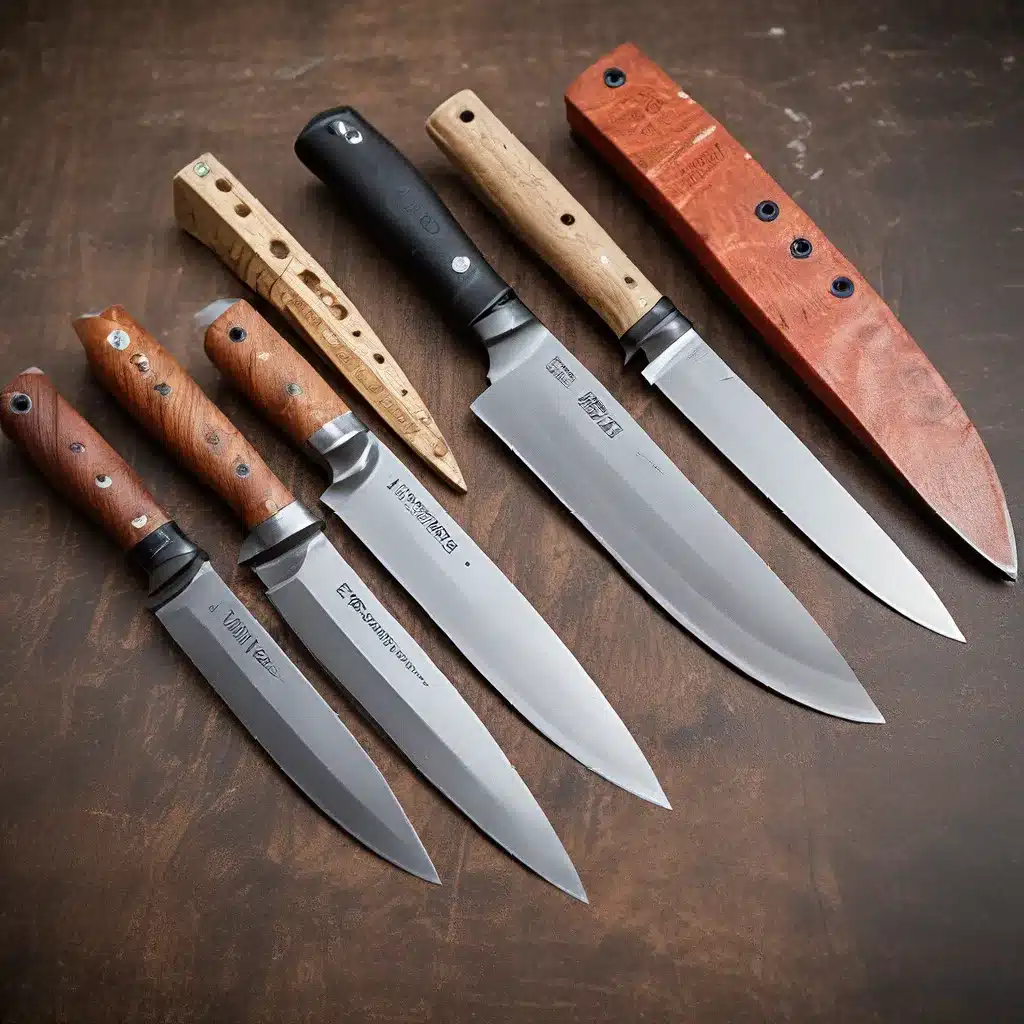
Ah, the art of knife sharpening – a sacred ritual that separates the culinary masters from the kitchen novices. As someone who has spent years honing my skills with the blade, I’m about to let you in on a few secrets that will transform your relationship with your trusty knives. Buckle up, because we’re about to embark on a journey that will have you slicing, dicing, and julienning like a pro in no time.
The Importance of Blade Care
Let’s start with a simple truth: your knives are only as good as the care you give them. Think about it – you wouldn’t expect your car to run smoothly without regular maintenance, would you? The same principle applies to your kitchen tools. Neglect your blades, and you’ll be left with dull, ineffective instruments that make even the simplest tasks a struggle.
On the other hand, properly maintaining your knives can unlock a whole new world of culinary possibilities. Sharpened to perfection, your blades will glide through ingredients with ease, allowing you to create visually stunning dishes that are a joy to prepare. Plus, you’ll save time and effort in the kitchen, which means more time to enjoy the fruits of your labor.
The Sharpening Essentials
Now, let’s dive into the nitty-gritty of knife sharpening. The first step is to invest in the right tools for the job. While you can certainly take your knives to a professional sharpener, learning to do it yourself can be incredibly rewarding. At the very minimum, you’ll need a high-quality sharpening stone and a honing steel.
The sharpening stone, also known as a whetstone, is the workhorse of the operation. These stones come in a variety of grits, ranging from coarse to fine, and are used to remove material from the blade, restoring its sharp edge. The honing steel, on the other hand, is used to realign the blade, ensuring that it maintains its keen edge between sharpening sessions.
Technique is key when it comes to sharpening. It’s not as simple as just running the blade back and forth on the stone. You’ll need to master the proper angle, apply the right amount of pressure, and develop a smooth, consistent motion. It may take some practice, but once you get the hang of it, you’ll be sharpening like a pro.
The Frequency Factor
Ah, the age-old question: how often should I sharpen my knives? The answer, my friends, is not as straightforward as you might think. It depends on a variety of factors, including the type of knife, the frequency of use, and the hardness of the materials you’re cutting.
As a general rule of thumb, most knives should be sharpened every 6-12 months, depending on usage. However, if you find yourself struggling to slice through even the softest of ingredients, it’s a clear sign that your blade needs some attention. And don’t forget about your honing steel – use it regularly (after every few uses) to keep your knives in tip-top shape.
The Unexpected Benefits
Alright, let’s talk about the hidden perks of keeping your knives in pristine condition. Aside from the obvious advantages of enhanced cutting performance, proper knife maintenance can also improve safety in the kitchen. Think about it – a sharp knife is less likely to slip and cause an accident than a dull one.
Moreover, well-maintained knives can last for years, even decades, with proper care. This not only saves you money in the long run but also reduces waste, as you won’t need to replace your trusty blades as often. And let’s not forget the sheer satisfaction of using a knife that glides through ingredients like a hot knife through butter.
Exploring the World of Knives
Now that you’ve mastered the art of sharpening, it’s time to dive deeper into the world of knives. Different blade shapes, materials, and styles can all play a role in your culinary experience, so it’s worth exploring your options.
For instance, did you know that Japanese-style knives are renowned for their exceptional sharpness and precision? Or that Damascus steel blades are known for their stunning, wavy patterns and exceptional durability? The possibilities are endless, and the more you explore, the more you’ll discover about the unique characteristics of each knife.
Sharpening as Self-Care
Lastly, I’d like to touch on the therapeutic aspect of knife sharpening. In a world that’s constantly moving at a breakneck pace, this ritual can be a moment of zen, a chance to slow down and focus on the task at hand. The rhythmic motion of the blade against the stone, the satisfying “click” as the edge is refined – it’s almost meditative.
So, the next time you reach for your trusty chef’s knife, take a moment to appreciate the journey it’s been on. Sharpen it with care, hone it with precision, and marvel at the transformation. After all, a well-maintained knife is not just a tool in the kitchen – it’s a reflection of your dedication, your passion, and your commitment to the craft.


